On the Road is a weekday feature spotlighting reader photo submissions.
From the exotic to the familiar, whether you’re traveling or in your own backyard, we would love to see the world through your eyes.
We are headed back to flyover country with Albatrossity! We will spend the rest of the week in Kenya with way2blue. Tuesday will be a repeat of last Friday, this time with all the photos that are supposed to be there :-) and then Kenya posts 4-6 will finish out the week.
Tech note: HEIC photos are not a file type allowed by the OTR form, which is why some of the images were missing.
Albatrossity
Spring came late to Flyover Country in 2022, and at the time of this writing, it’s still dawdling. Few trees leafed out, snow showers just to keep your attention, and lots of wintertime birds still lingering here. But we’ll get started on this series, and hope that the real spring is coming soon.
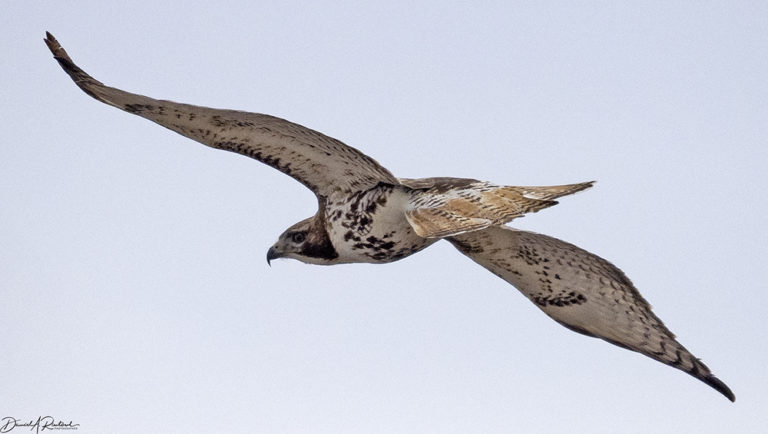
One of the lingerers was this Red-tailed Hawk (Buteo jamaicensis). Yeah, I know that this species spends the summers all across North America, but this one is a Bird of the North Country. It is a light-morph Harlan’s Hawk (B. j. harlani). So for jackals who live in Canada or Alaska, if you see her, say hello.
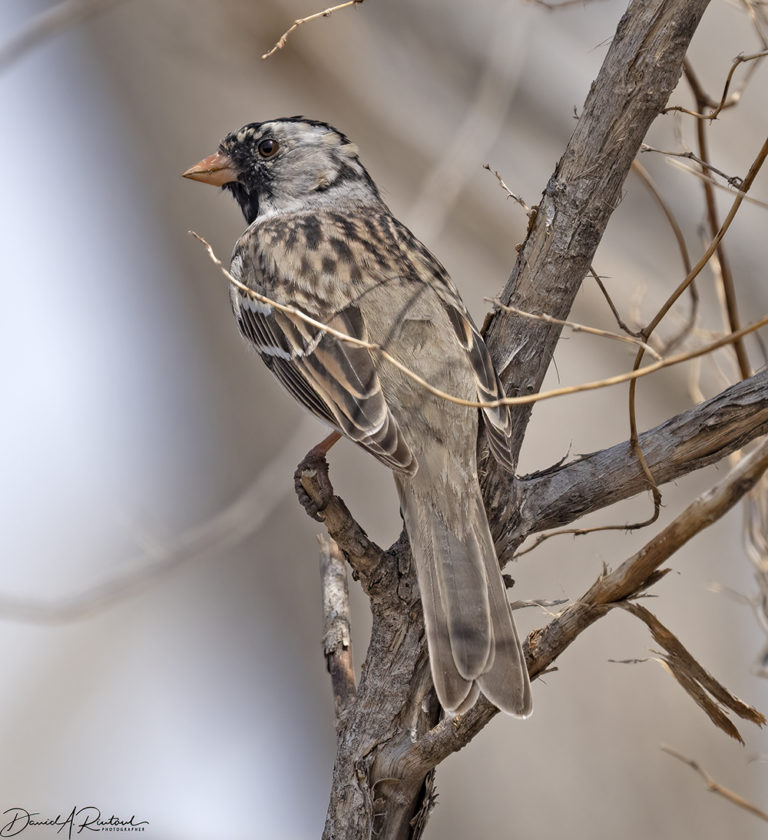
Another North Country bird, but one that does not usually stay for the summer anywhere in the United States, this Harris’s Sparrow (Zonotrichia querula) was singing its sweet high whistle and thinking of the stunted trees at the edge of the boreal forest that will soon be its summer home. This remote breeding ground meant that the nest of this species was one of the last to be discovered in North America, in 1931. The discoverer, George M. Sutton, was not exactly understated in his description of that event: “As I knelt to examine the nest, a thrill the like of which I had never felt before passed through me. ….at my fingertips lay treasures that were beyond price”.
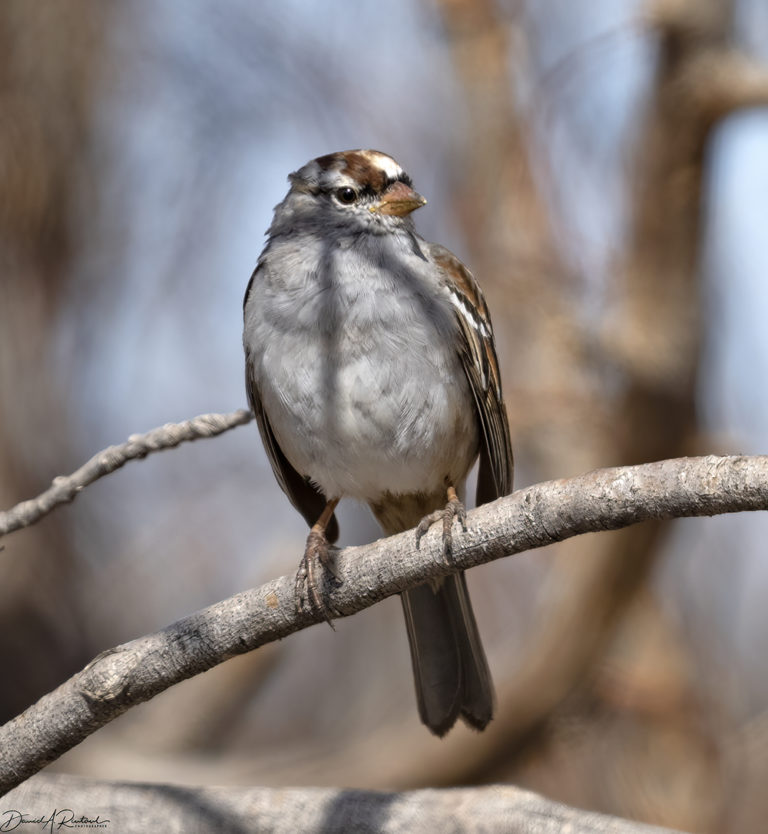
Although many birds complete their molting before migration in the spring, some, like this White-crowned Sparrow (Zonotrichia leucophrys) , sport plumages that are pretty unique. First-year birds of this species have brown lateral crown stripes and golden/buffy central crown stripes, while the adults show the eponymous white crown stripe. This first-year bird has the brown laterals, but is starting to display a white central crown. A very bold fashion statement.
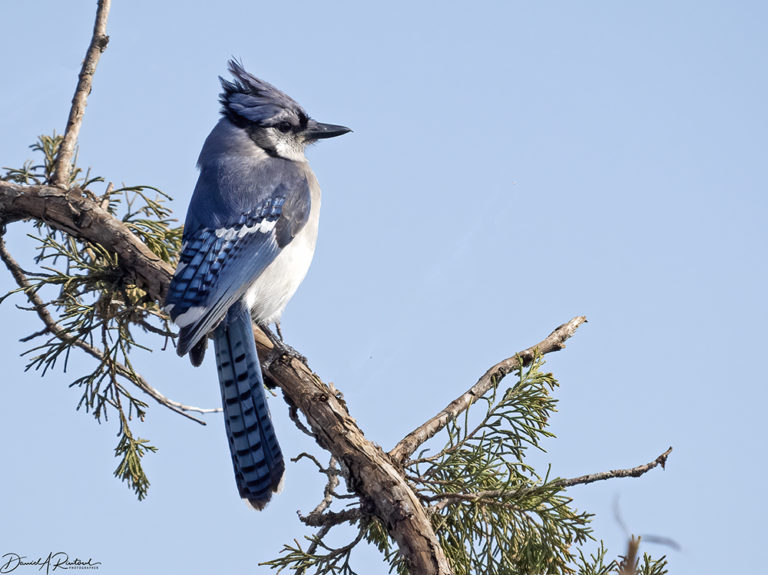
Here’s a bird that is familiar to all birders west east of the Rockies, the Blue Jay (Cyanocitta cristata). But even though it is an obvious and common bird, we don’t know much about migration in this species. We do know that it is the only New World jay that has latitudinal migration. We also know that in most regions outside of Florida and the Gulf Coast, some Blue Jays migrate and some stay year-round. As far as can be determined, age is not the sole determinant of migration vs not-migration, but some studies found that a significant majority of migrants were second-year birds like this one. The Kansas wind ruffling its crest might soon push it north. Or not.
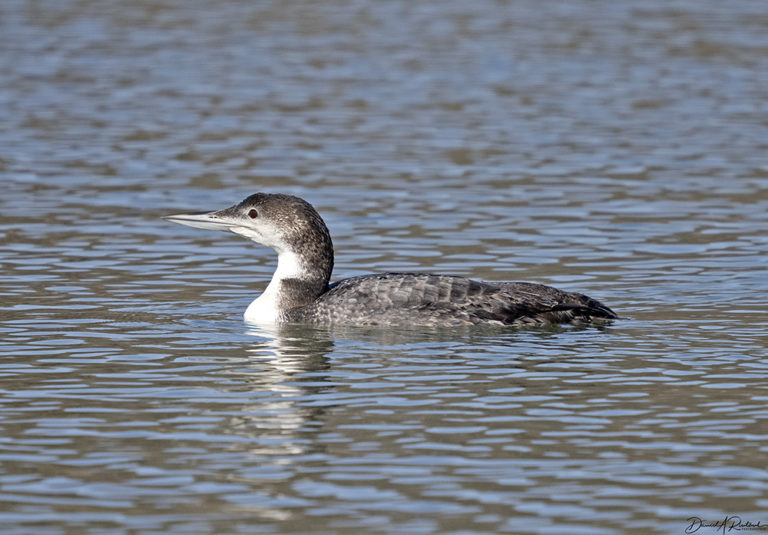
Here’s a bird we know is a migrant, since this species does not breed or winter in Kansas. Common Loon (Gavia immer), also known as the Great Northern Diver in Europe. This one still needs to molt into summer plumage, and it was not yodeling, but it is a welcome sight during the spring and fall migrations here.
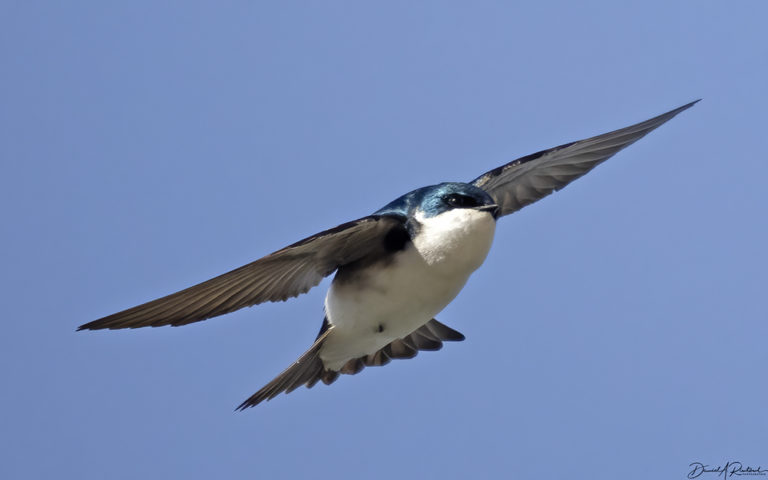
Tree Swallows (Tachycineta bicolor) are another welcome sight in spring. One of the first swallows to return to the state each year, they nest in tree cavities excavated by other birds. Competition for such breeding sites might be one of the reasons they head north so early. But they also use nest boxes, so if you want to see some of these guys, but up some nest boxes near your local pond or stream.
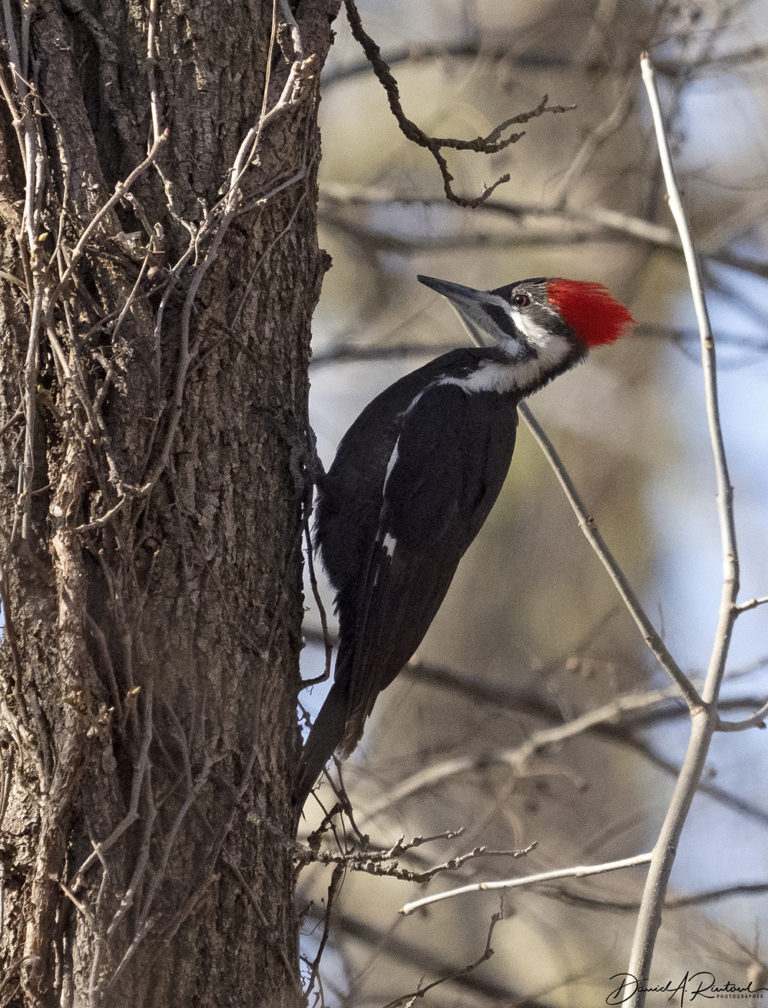
Another cavity nester, but this one probably makes holes that are too large for swallows to use. Pileated Woodpecker (Dryocopus pileatus) is not a migrant, but is a permanent resident wherever it is found in North America. This stunning bird has slowly been increasing in my part of Flyover Country, but still rare enough to elicit a gasp from me whenever I come across one.
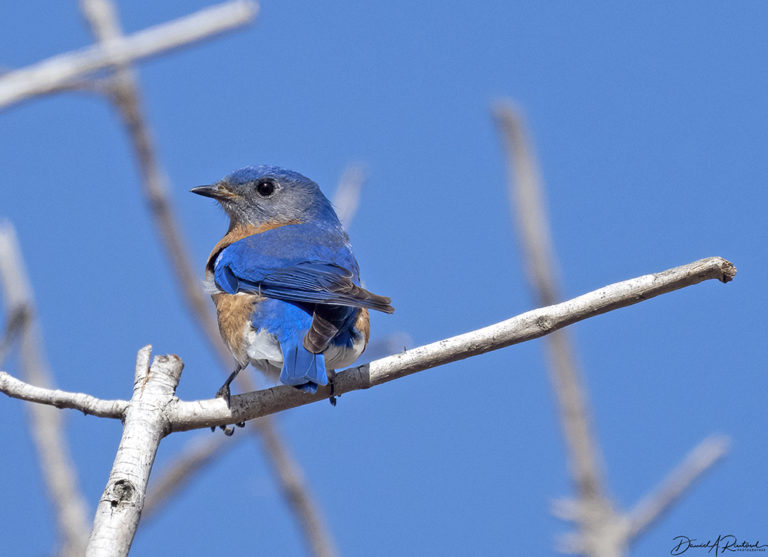
Still another cavity nester, Eastern Bluebirds (Sialia sialis) were pretty scarce in these parts last spring; our deep freeze February probably eliminated many of them from the gene pool. This male was courting a female, another sign of a late spring, because in many years these birds would have eggs or nestlings by now.
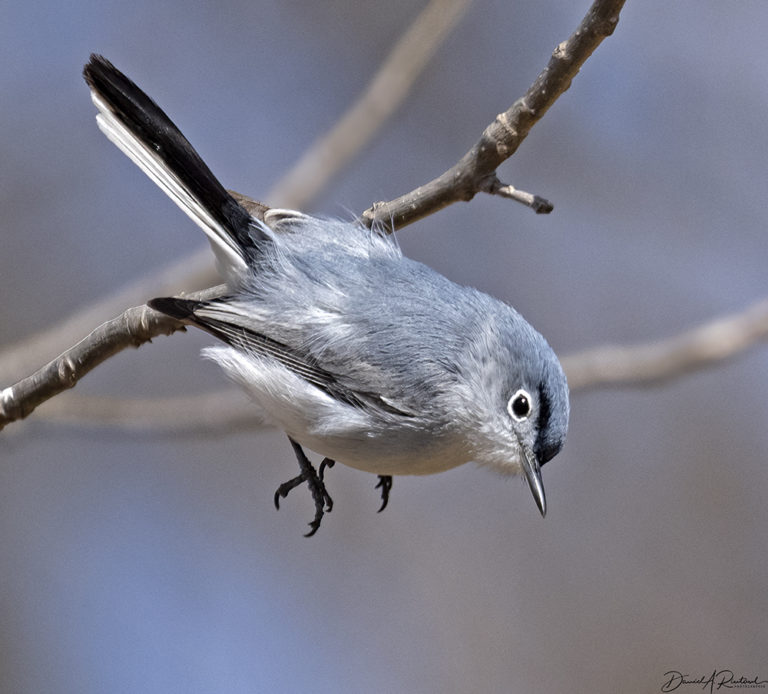
A noisy announcement that spring is nigh in these parts is the Blue-gray Gnatcatchers (Polioptila caerulea). The dark eyebrow of this male bird helps give it a stern demeanor as it leaps from one perch to a closer perch in order to bitch at the photographer more effectively.
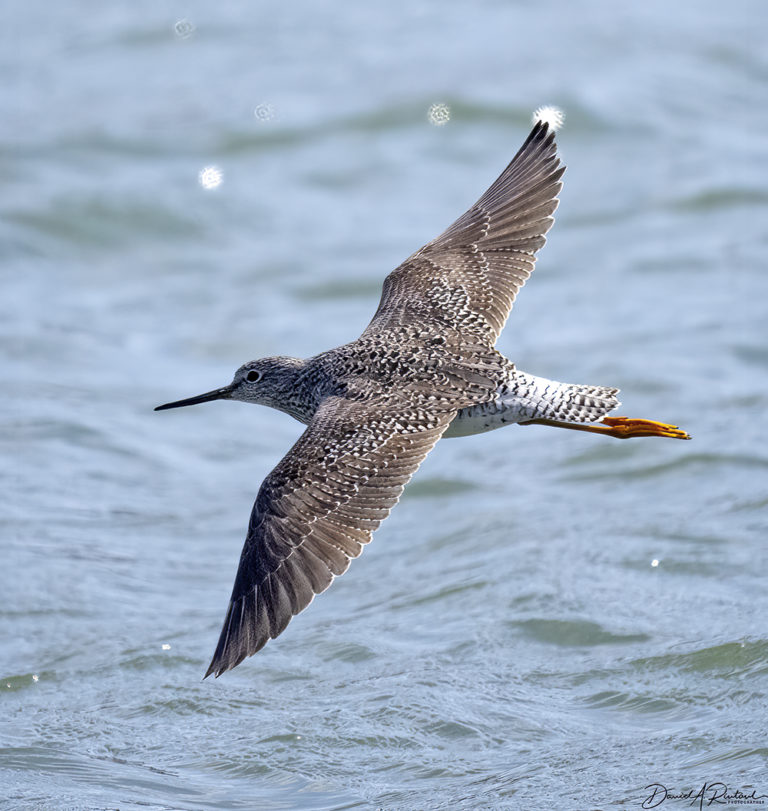
Shorebirds are another sign of spring in Flyover Country, as these long-distance migrants give us ID challenges all season long. This is a Greater Yellowlegs (Tringa melanoleuca), which also has some common names like telltale and yelper, based on the penetrating alarm calls that they give when they flush. This one was no exception.

Mike E
Very nice! I 2nd the emotion on the pileated, I’ve only seen one in the field. My niece posted on FB a short video of a downy getting yelled at by some other bird while she was out and about in Phila, a sweet little vignette of spring.
OzarkHillbilly
As one might expect, Pileateds are common enough here in the hills and hollers, but I still get thrill whenever I see one.
I used to put up nest boxes for bluebirds and every spring they would get investigated, sometimes they would even begin to build a nest. But every time they would abandon it, for a more favorable location down in the valley I suspect. S’ok, we have flycatchers nest here every year, usually fledging a 2nd hatch in the summer. We also have Summer Tanagers take up residence. I never see the nest but I hear (and usually see) the male declare his supremacy over this bit of the Ozarks every morning, and if I am lucky I can catch a glimpse of the female every now and again.
jdk
Fun to see such a wide variety of birds to think I might see some day around here.
Yutsano
I think you mean east of the Rockies for the blue jays good sir, as west we have the Stellar’s jay. I wish blue jays could compete over here, as they’re fun birds. Assholes, but fun.
Albatrossity
@Yutsano: Good catch! Thanks!
And I wish we had Steller’s Jays here. The grass is always greener…
The other western jay that I love to see are the scrub jays. Very bold and beautiful.
Chat Noir
Love your pix and descriptions!
arrieve
I saw my first ever pileated woodpecker up in Ithaca a couple of weeks ago, and they are really magnificent birds. Jaw-dropping, literally.
Albatrossity
@arrieve:
True story. I taught a class called Field Ornithology for several years; basically it was 3 hours of bird-watching every week for 1 credit hour. Some biology majors, but mostly students from a program for folks who wanted to be park rangers, or other nature-interpreter gigs.
One year one of the students was a very taciturn kid from western Kansas, raised on a farm and with a fair knowledge of the birds already. He sure knew his ducks quite well, but forest birds were a novelty. He rarely if ever spoke on our weekly birding strolls. Stoic he was. Watching birds and walking was good enough for him
One day he and I were out in front of the rest of the group, and a Pileated Woodpecker dropped down from above and perched in the sun on a fallen log about 40 ft ahead of us. He uttered the only word he ever spoke during our time in the field that semester.
“Shit!”
The bird does have that effect on people…
Mark von Wisco
I live about a third of a mile from a forested area of the Wisconsin river, and I make regular sightings of pileated woodpeckers. I even had one in my yard a couple years back hunting grubs in a sugar maple tree in my yard.
Being near the river I also get to see bald eagles, ospreys and great blue herons. We also have sand hill cranes that nest in the area, but they’re not back to Central Wisconsin just yet.
Old School
Of course, she might be in Tangier. So then they wouldn’t see her.
Joe from Lowell
We have a lot of red tails in my neighborhood.
A couple years ago, I would hear one in the tree outside my window every morning, but I could never see it.
One morning, I was determined to spot the hawk, so I sat at the window and looked and looked. I finally spotted the target:
It was a mocking bird, doing red-tailed hawk cries.
StringOnAStick
More gorgeous photos, thank you! Lots of jays here, including scrub jays.
The mobs of pine siskins are emptying my feeders every two days , plus a smattering of house and lesser goldfinch; the cats are loving the view from their favourite window and that’s the closest they’ll ever get since they are indoor only. I need to find a more affordable source of finch food at this rate of consumption. Saw the first CA quail in months this morning, cleaning up the dropped seed.
Albatrossity
@Old School:
A woman from anywhere (formerly Mohagan)
@Joe from Lowell: Oh yeah. I get that a lot here in N CA, as well. :-)
A woman from anywhere (formerly Mohagan)
What a great shot of the Blue-grey Gnatcatcher! Thanks for another great post.